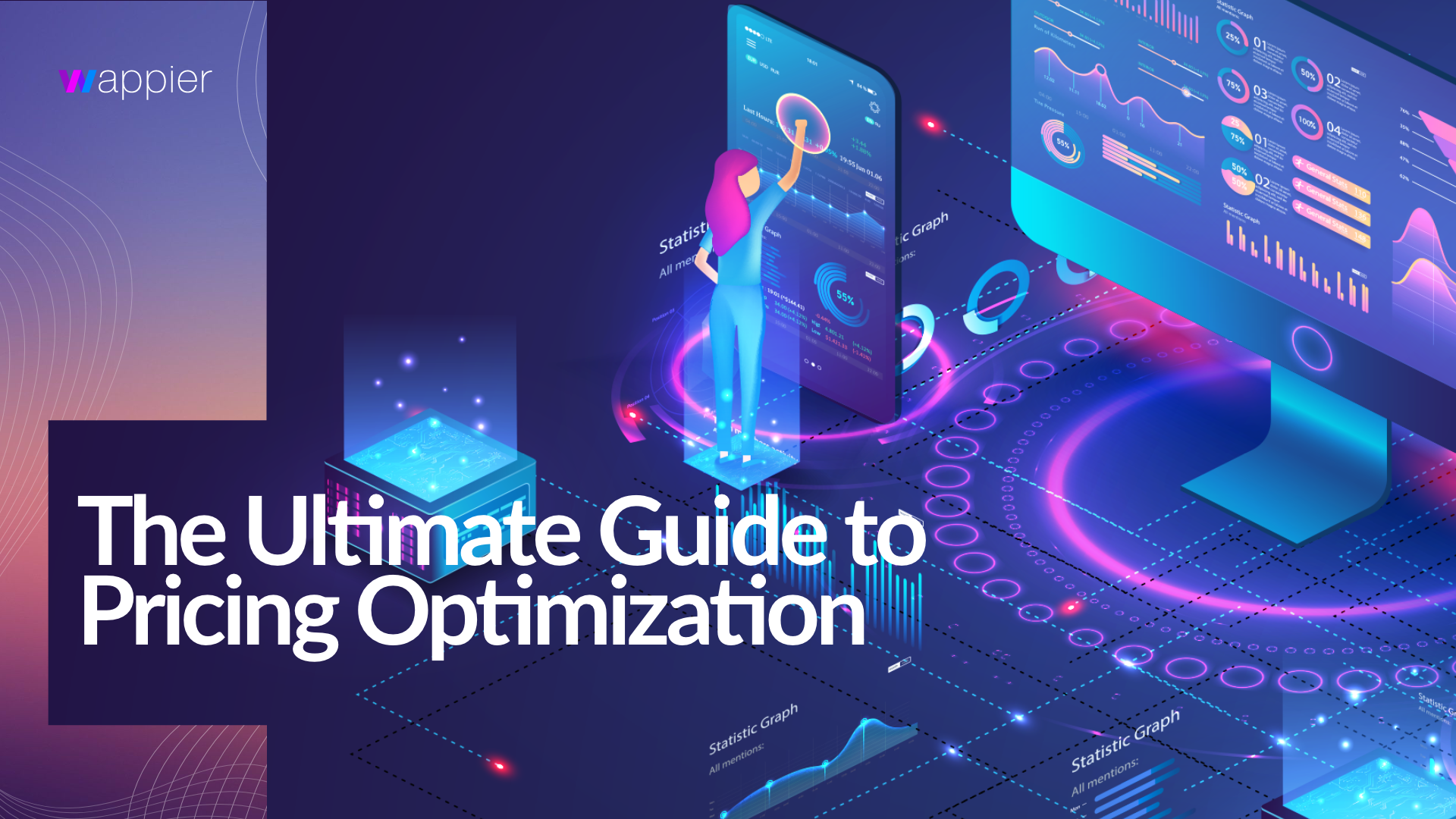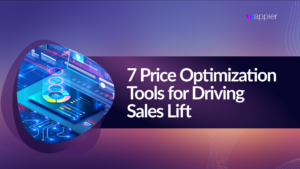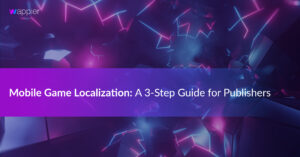Pricing optimization is a non-negotiable element of any successful commercial strategy. Price doesn’t just underlie every individual purchase decision, it also represents an important way that businesses and consumers interact overall. Because there are countless variables that feed into effective price optimization models, companies need to find ways to automate the complex calculations that deliver the right price to the right customer at the right time.
In this guide, we’ll go over the basics of ecommerce price optimization, look at five crucial elements of effective price optimization models, and investigate seven solutions that turn price optimization into a tool for driving sales lift.
Jump to a section…
A Beginner’s Introduction to Ecommerce Price Optimization
5 Elements of Effective Pricing Optimization Models
7 Price Optimization Tools for Driving Sales Lift
Ready to see how wappier’s machine learning-powered price optimization tools can help your company drive results? Get in touch.
A Beginner’s Introduction to Ecommerce Price Optimization
Ecommerce price optimization is the process of setting the best possible prices for anything you sell online. That includes goods that are sold on websites, online marketplaces, and in apps. Price sensitivity suggests that a product’s price tag influences consumers’ purchase decisions, which is what makes actively optimizing prices so important — a huge number of variables factor into what is the right price at the right time.
What qualifies as the “best” possible pricing will depend on your company’s specific goals. Some ecommerce sellers will use pricing optimization to aim for a revenue increase, for example, while others will focus on maximizing profit per sale. Thankfully, there are dedicated price optimization tools designed to help ecommerce companies of all kinds realize their unique goals. Here are a few examples:
- wappier: Global pricing uses proprietary machine learning algorithms to automatically adjust prices for digital goods in each supported country, while promotional pricing shows each individual unique prices based on the specifics of their journey when they see a special offer.
- PriceStack: Preflect’s AI-powered price optimization suite identifies non-verbal cues that increase the likelihood consumers will make a purchase, and gives Shopify merchants a suite of analysis tools to adjust their prices accordingly.
- ELEX dynamic pricing: WordPress users can use this WooCommerce plugin to adjust prices across an entire product catalog. It’s an affordable solution, but it doesn’t offer any pricing automation so users will have to take a DIY approach.
- SellerLogic: Amazon’s dynamic repricing tool uses AI-driven adjustments to keep products in the “Buy Box” section and then find the highest possible price point to maximize the seller’s profit margin.
- Price Intelligently: ProfitWell’s price optimization tool combines proprietary algorithms and a market panel to keep subscription tier pricing in the sweet spot.
Want to learn more about the fundamentals of price optimization? Check out our post “The Beginner’s Guide to Ecommerce Pricing Optimization.”
5 Elements of Effective Pricing Optimization Models
Building the right price optimization model from the start should allow your business the flexibility required to adapt alongside the countless factors that go into consumers’ purchase decisions. Here are five elements of an effective pricing optimization model:
#1: Specific Business Goals
As we’ve already discussed, every company has unique business goals. Think beyond profit to identify the metrics you want to impact with your price optimization strategy. Then take those goals into account when you design and build your model. For example, you might be aiming to:
- Increase average customer lifetime value,
- Improve customer retention, or
- Grow customer acquisition.
#2: Qualitative and Quantitative Data
To see results from your price optimization model, you need to base your decisions on real data. You’ll need to take into account both qualitative and quantitative data to build a full picture of your customer and understand what motivates them to buy:
- Quantitative: Effective price optimization models incorporate both user data — device information, geo-location, engagement, purchase history, velocity of spend etc. — and broader economic, social, and cultural trends.
- Qualitative: Use reviews, surveys, and other modes of feedback to connect deeply with your audience and understand the consumers who use your app or product most frequently.
#3: Best Practices and Industry Standards
Industry standards in the mobile games world price single-use items at $0.99 each. Your price optimization model doesn’t need to adhere strictly to that standard, but you should factor it and other best practices into your strategy as a benchmark.
#4: Behavioral Economics and Psychology
Make sure your price optimization model accounts for patterns in player behavior and psychology. Provide decoy offers that nudge users toward the target item, for example, and make sure to stay in the goldilocks region of not too few and not too many options — finding the “just right” number will reduce friction and encourage in-app purchases.
#5: Machine Learning Automation
It’s incredibly difficult to achieve true pricing optimization manually. Automate your price optimization models with artificial intelligence and machine learning algorithms that can ingest and make sense of the huge quantities of data that contribute to determining the right price at any given time.
Curious about how to build these elements into your pricing strategy? Read more in our article on the “5 Elements of Effective Price Optimization Models.”
7 Price Optimization Tools for Driving Sales Lift
Measuring incremental sales lift allows companies to understand the effectiveness of their promotional efforts. Understanding the impact of a given campaign empowers marketing or advertising teams to adapt and improve their strategies over time. Because price plays such an important role in consumers’ purchase decisions, pricing optimization can help increase the results of any kind of promotional campaign. Here are seven price optimization tools that help drive sales lift:
- wappier: With a proprietary AI engine that analyzes huge quantities of data to automatically optimize in-app purchase pricing for mobile games and apps, wappier helps publishers improve both time-to-sale and overall revenue lift.
- Competera: Retail and e-commerce brands use Competera to build custom pricing automations and benefit from demand-based price recommendations and real-time repricing suggestions.
- Mage: Mobile-focused price optimization tool uses a proprietary SDK to deliver pricing optimization in over 170 countries, driving sales lift in real time through automated recommendations and pricing adjustments.
- Microsoft Power BI: The sales analytics and data visualization tools available through Microsoft Power BI allow companies to measure sales lift and anticipate and impact the role price optimization will play in those results.
- Price2Spy: Features like competitor pricing comparisons, historical data analysis, and alerts about repricing opportunities help companies drive sales lift and maximize profitability.
- Prisync: Retailers can use Prisync to monitor competitor prices in real time, analyze historical price trends, and optimize pricing to drive sales lift based on real-time market fluctuations.
- Qualtrics: Data visualization and complex logic tools help companies make the most of many different pricing resources to find the right pricing that will drive sales lift.
Ready to dive deeper with these results-oriented solutions? Read our full article: “7 Price Optimization Tools for Driving Sales Lift.”
Pricing optimization moves the needle on critical sales metrics by ensuring that individual consumers are offered the right price at the right time. That’s why wappier uses AI and machine learning technology to power our price optimization products and help mobile game companies impact core business goals like in-app revenue, customer lifetime value, and more. Ready to learn more about how wappier can help your company achieve true price optimization? Contact us today.






